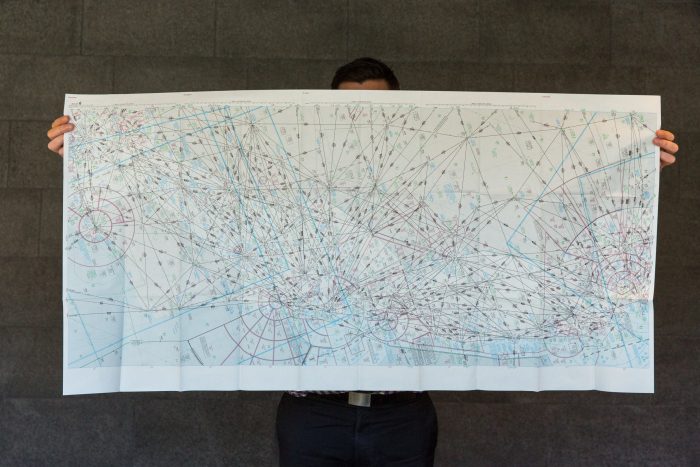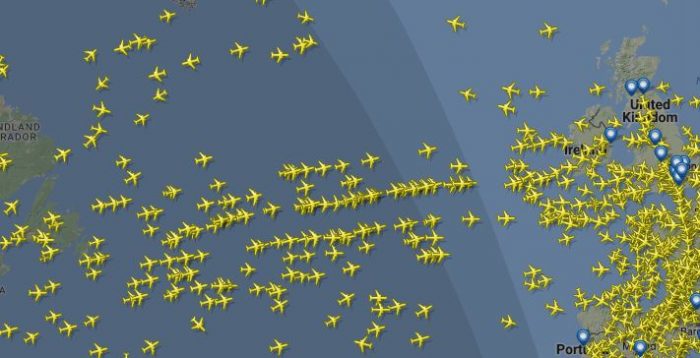Before the invention of GPS or Google, travelling somewhere often required the use of a hardcopy map. And just like a motorist would keep a battered street directory in the car, pilots would use giant paper charts displaying the air routes that crisscrossed the globe.

Try folding this back up: An aeronautical chart of flight routes between Melbourne and Brisbane.
These maps were large, unwieldy and very expensive.
Today we have paperless cockpits with flight manuals and maps now stored on iPads. This not only saves room on the flight deck but the removal of several folders of paper charts and manuals helps shed a few kilograms, from the aircraft. Multiplied over hundreds of aircraft, flying thousands of kilometres, this can add up to some decent fuel burn savings.
Everything a pilot needs is available on the iPad or, as they like to call it their “electronic flight bag”. When we introduce wi-fi later onboard later this year, the charts on the iPads can be updated with real time weather, providing even more accurate flight information for our crews.
But let’s get back to the maps. How do pilots use them?
Even with all that sky up there, flying from Melbourne to Perth (for instance) isn’t a case of following a straight line between those two points. To keep order in the sky, the maps show flight paths that pilots need to follow.
Each flight path is divided into waypoints. Over land these waypoints can be either radio beacons or other locations designated by their latitude and longitude, while over water only latitude and longitude-based locations are used. The waypoints are also used by pilots to cross check the aircraft’s position.
The maps show other details like the radio frequency they need to contact local air traffic control and the lowest safe altitude when over areas of high terrain like mountain ranges.

Peak hour: Air traffic control will organise aircraft into different tracks. This screengrab shows the amount of evening departures from the US to Europe. Pic: FlightRadar24
In areas of congested air space like the North Atlantic aircraft, are funnelled into several tracks. Think of the tracks like a freeway and the individual flight paths inside each track like a lane of traffic.

Leaky boats sink: It appears someone in Brisbane has quite the sense of humour
Another way of separating aircraft is altitude. Aircraft flying in a westerly direction on a particular highway are given cruising altitudes that contain even numbers. Aircraft flying the opposite direction are given an odd number. (So you might fly from Dubai to London at 38,000 or 40,000 feet but fly back at 39,000 or 41,000 feet.) This acts as another safeguard in case anyone strays outside of their lane.
And to keep everyone on track, pilots need to pass over the individual way points which have a variety of five letter names – all of which are deliberately unique like TANTA, NABBA and LIZZI.
Sometimes the waypoints are named after famous sporting heroes, (Rod) LAVER and local air traffic controllers.
In Brisbane one arrival approach has the waypoints LEAKY, BOATS, SINNK.
All of this is a long way from the early days of aviation, when pilots relied on following rivers or rail line to stay on course over land or by the stars when over water.
Check out more Roo Tales here.